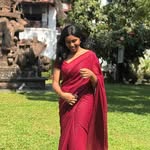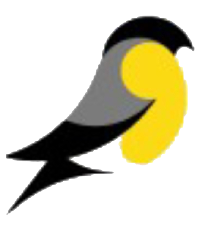Introduction
Long ago in Kerala, a martial art was born not just of combat, but of rhythm, grace, and spirit. This was Kalaripayattu, a art taught by masters in sacred grounds known as kalaris. But it is not only about fighting,it shaped body like river ,which includes repetition with patience,and pure devotion .Over time, it has evolved beyond combat and became more than an art; it became a part of Kerala’s soul.

Origins of the Art-form
The origins of Kalaripayattu date back over 3,000 years. It is believed to have started in southern India, especially in Kerala, The term “Kalari” means battlefield, and “Payattu” means fight or practice, which together indicate “the fight on the battlefield.”
Kalaripayattu is influenced by Dhanurveda, the ancient Indian science of warfare. It is traditionally taught in Kalaris, which are training schools. Earlier kings and soldiers used this form of fighting as part of their military training.

How it Flourished
Provincial kingdoms such as the Cheras and Zamorins supported Kalaripayattu throughout the medieval age, when it was at its height. It developed into essential military training tool, particularly in the Travancore and Malabar areas. Particularly, the heroic elements of this art were made more widely known by warrior-saints like Aromal Chekavar and Unniyarcha, who often appear in Keralan songs (Vadakkan Pattukal).
Due to Kalaripayattu was associated with resistance, it was put down during the colonial era, But because of the efforts made by icons like Kerala Kalamandalam and C.V. Narayanan Nair, it was able to survive by secret methods in the 20th century.
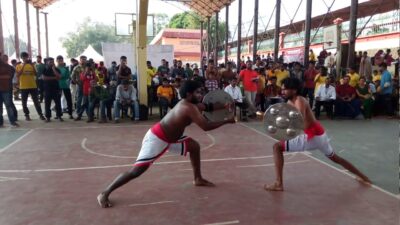
Kalaripayattu and the Monk Who Crossed Borders
Bodhidharma was a monk who long ago left the luxury of the royal court for spiritual enlightenment. He went on a long journey to Shaolin Monastery in China,and there he found monks who were physically weak and didn’t have enough strength for meditation. So he taught different sets of excercises which later eventually form the base of Shaolin martial arts,a blend of breath, power, and focused movements.
Kalaripayattu was already well-established back here in Kerala. With its flowing movements, animal-like gestures and knowledge of pressure point , and which closely resembled the physical order taught by Bodhidharma. Although these info are still at odds over the exact facts and the similarities of Kalari’s to early Chinese martial arts which shows a cross-cultural exchange of knowledge.
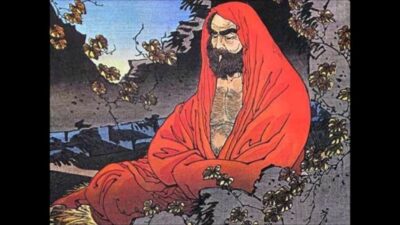
Details about the Motifs Used
Kalaripayattu Art is not only a fight ; it can also be found as in drawings like temple murals, martial sculptures, and ceremonial designs.
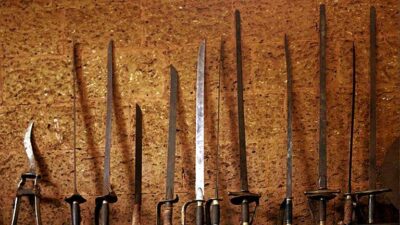
Weapons: Swords, shields, spears, and urumi (flexible sword) are common motifs in visual portrayal of the art.
Animal Forms: lions, peacocks, elephants, and snakes which shows the power of nature.
Circular pattern: Energy cycles are represented by circular patterns, which represent the “pranic” flow that takes place within the human body.
In addition to decorating performance spaces, these motifs which emphasize the symmetry and purity of battle are utilized in murals and floor designs.
Experiencing a Kalaripayattu Performance
A live Kalaripayattu performance is blend of both the combat skill and reflection on the Kerala’s rich cultural heritage. The performance usually held in kalaris (traditional training ground) and often begins with a prayer to the teacher and the deity
Starts with Meipayattu, a warm-up that includes different stretchs like animal-inspired positions. These prepare the body for more complex techniques. Next comes Kolthari (practice with wooden weapons) and Angathari (combat using metal weapons).
The costume worn by Kalaripayattu performers is simple yet functional. Male artists usually wear a red or black cloth called kacha, tied tightly around the waist and thighs for easy movement and as for female performers wear fitted tops.They put on body oils to improve flexibility and to prevent muscle injuries. Using headbands or waistbands are like preferences overall their attire sticks to minimal for ease of motion .
For a visual treat these performances are usually played along with traditional instruments like the Chenda and Maddalam, thus adding more rhythm and energy.

References to Pop Culture
Indian and global popular culture have shown many Kalaripayattu with differences.
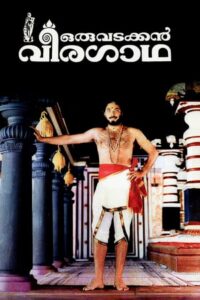
Malayalam films like Oru Vadakkan Veeragatha (1989) and Unniyarcha (1961) stresses and focus on warrior stories.
Bollywood movies like Commando, Kalaripayattu-trained actor Vidyut Jammwal has highlighted the art form.
Hollywood movies like The Last Airbender and The Matrix.
In Literature and Music:
Writings by authors like Anand and M.T. Vasudevan Nair oftens mentions Kalaripayattu.
Ballads tell the dramatic story of Kalari fighters deeds (Vadakkan Pattukal).
Current Status of Kalaripayattu
Kalaripayattu is both a combat art and a cultural performance. It’s based and taught in Kerala Kalari schools but due to its influence and getting immense popularity both inside and outside of other Indian states many Kalaripayattu schools are setting up. However, the number of well taught professionals ie, Gurukkals (teachers) is declining, and commercialization has brought down some of the traditional customs. Today’s generation often views this as mere performance in stage rather than as a disciplined way of life and that strong bonds between guru and a disciple . However, ministry of culture, non-governmental organizations, and the performers continue to preserve and spread the art through workshops, international cultural fests , and documentation.

Conclusion
More than just a combat art, Kalaripayattu is a mixture of movement, spiritual mindfulness, and visual storytelling that has been a part of Kerala’s rich creative and historical identity from its starting in historic battles to its modern cultural exhibitions. Despite the challenges of modernization and the decreasing number of practitioners, it is still a well detailed practice that undergoes and follows discipline, fitness, and cultural pride, and its still preserved and continued existence and its progress which rely on ongoing programmes in policy support, education, and awareness.
References
Deshpande, A. (2012). Indian martial arts. Kaveri Books.
International Kalari Federation. (n.d.). About Kalaripayattu. Retrieved June 5, 2025, from https://www.kalaripayattu.org
Kerala Tourism. (n.d.)Kalaripayattu – the martial art of Kerala. Retrieved June 5, 2025, from https://www.keralatourism.org/kalaripayattu
Menon, A. S. (2007) A survey of Kerala history. DC Books.
Nair, M. K. (2002). Kalaripayattu: The martial art tradition of Kerala. Indira Gandhi National Centre for the Arts (IGNCA).
Shahar, M. (2008). The Shaolin Monastery: History, religion, and the Chinese martial arts. University of Hawaii Press.
Zarrilli, P. B. (1998). When the body becomes all eyes: Paradigms, discourses and practices of power in Kalarippayattu, a South Indian martial art. Oxford University Press.
Kalaripayattu. (n.d.). Encyclopaedia Britannica. Retrieved June 5, 2025, from https://www.britannica.com/sports/kalaripayattu
IGNCA. (2002). Kalaripayattu: The martial art tradition of Kerala. Indira Gandhi National Centre for the Arts.
Kerala Tourism. (n.d.). Kalaripayattu per
formances. Retrieved June 5, 2025, from https://www.keralatourism.org/kalaripayattu

